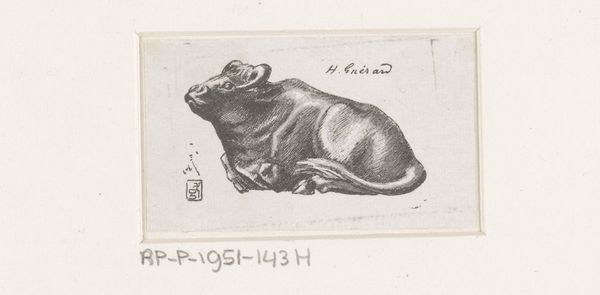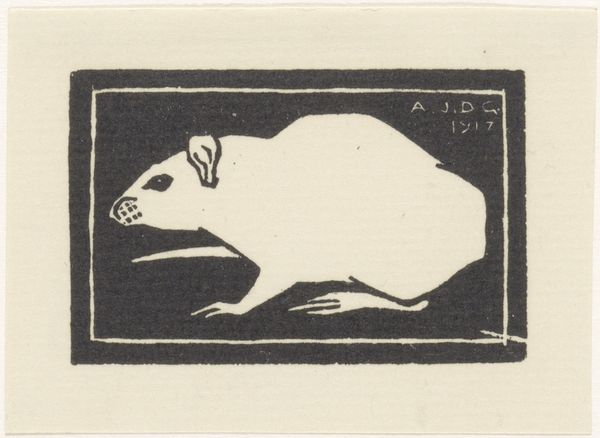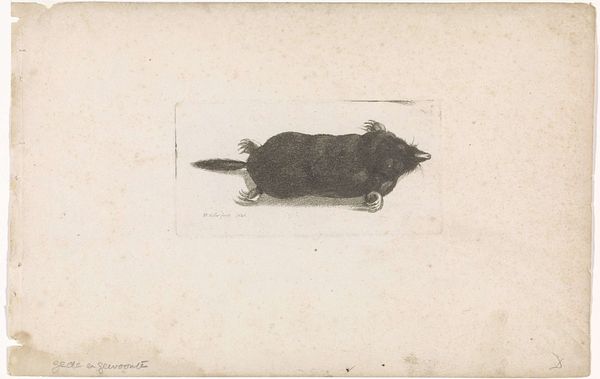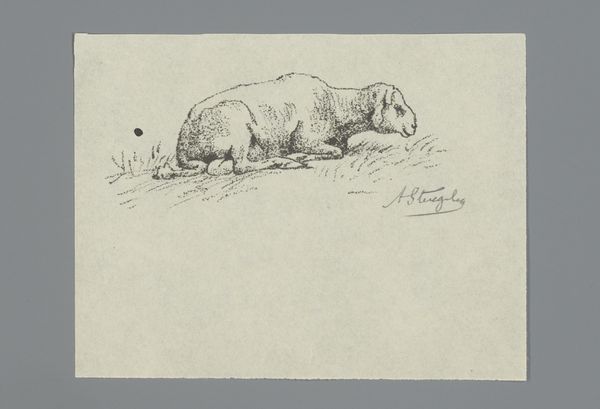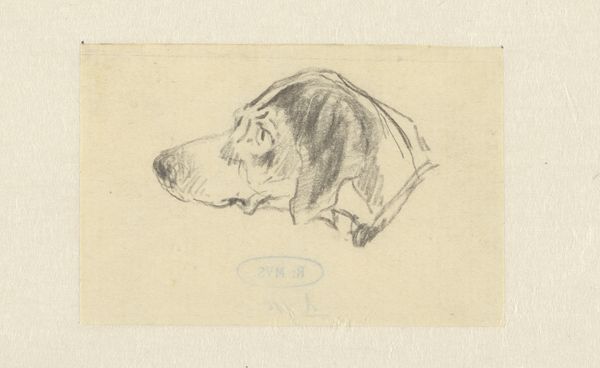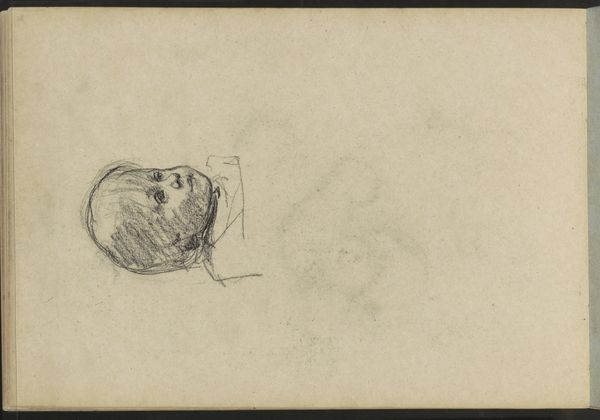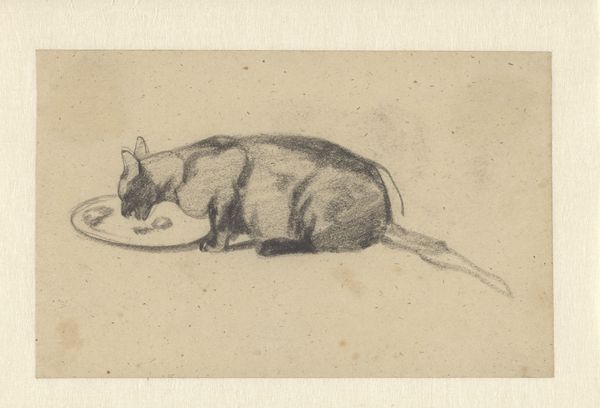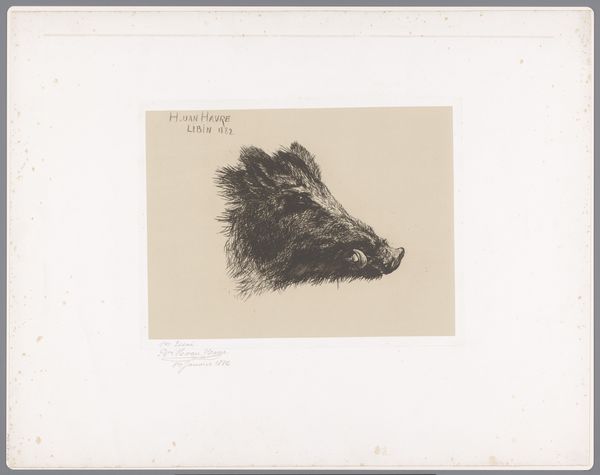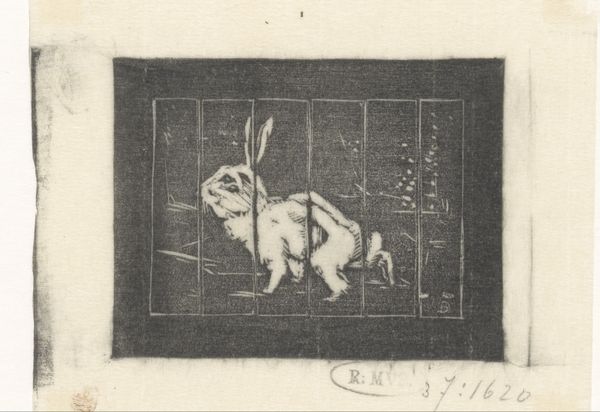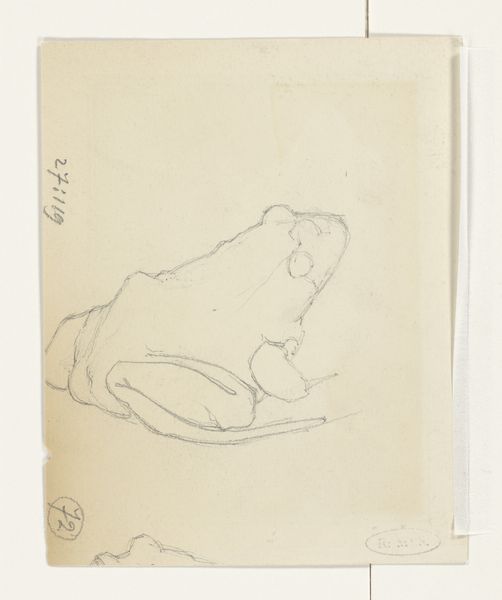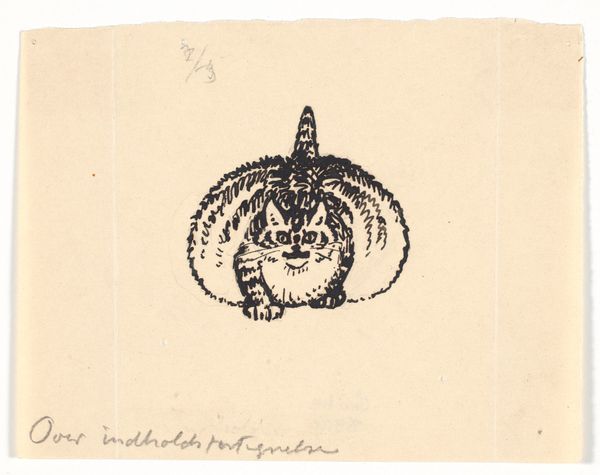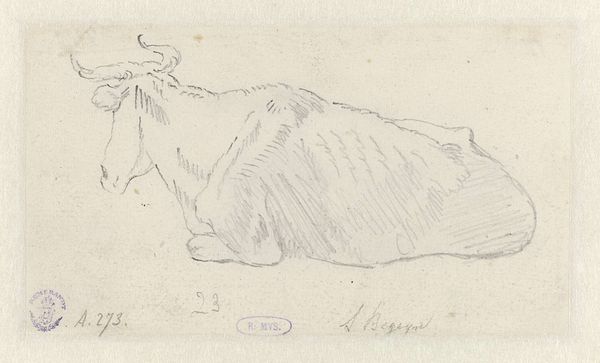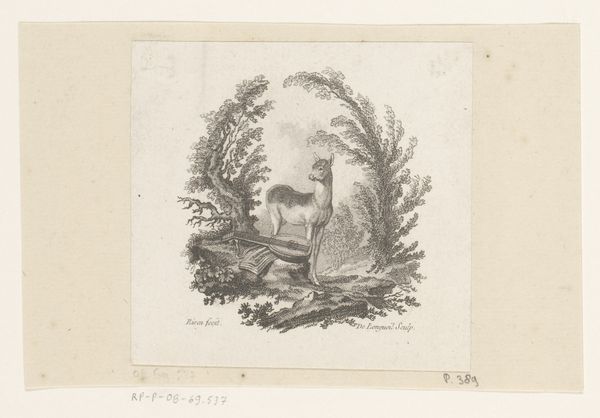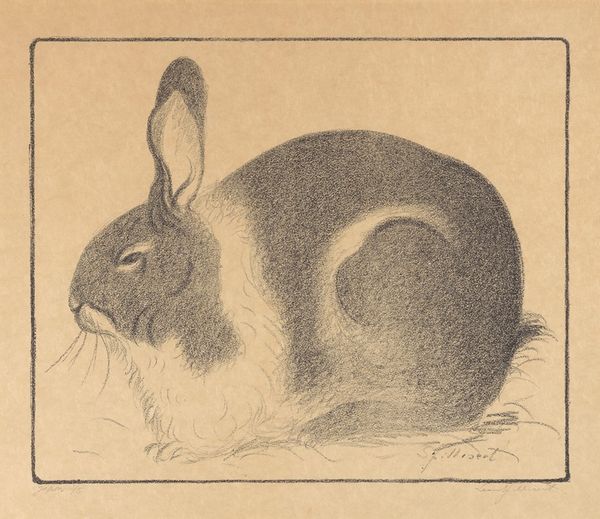
drawing, sculpture, pencil
#
portrait
#
pencil drawn
#
drawing
#
animal
#
pencil sketch
#
pencil drawing
#
sculpture
#
pencil
#
realism
Dimensions: height 56 mm, width 67 mm
Copyright: Rijks Museum: Open Domain
Editor: Here we have Henri-Charles Guérard’s "Sculpture of a Rabbit," made in 1883. It’s a drawing, mostly in pencil, and it’s quite striking. The way the lines create the volume is impressive, especially given the simplicity of the medium. What can you tell me about the artistic approach here? Curator: It’s crucial to recognize the material conditions that allow for such a work. Guérard's skilled hand wielding a pencil transforms graphite into something mimicking sculpture. But think about the paper itself – the labor and resources to produce it. Was it mass-produced, or handcrafted? These details influence the reception of the image, right? Editor: Absolutely. The type of paper impacts how the pencil adheres and how the textures come across, and of course access to these materials would also impact artistic creation. Curator: Exactly. And what about the social context? Realism emerged with industrialization. Did the rise of factory production influence the depiction of this very real rabbit, imbuing it with a different significance? Consider too the potential market. Who was intended to consume this image? Editor: So you're suggesting the drawing is not just about portraying the rabbit accurately, but about larger issues of production and consumption within that historical period? Curator: Precisely! The choice of something as quotidian as a rabbit elevated through artistic skill invites us to contemplate the labor and materiality embedded within what we often consider mundane. Editor: That’s fascinating. I'd never considered the drawing through the lens of production processes before, it adds so much to it. Curator: It encourages a deeper consideration not just of the *what* but of the *how* and *why* behind the artwork’s existence. Editor: Definitely gives me a new perspective on art in general. Thanks!
Comments
No comments
Be the first to comment and join the conversation on the ultimate creative platform.
